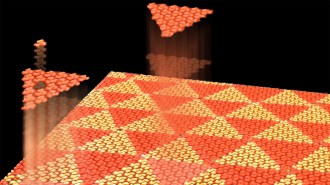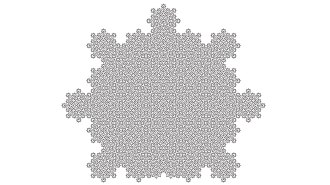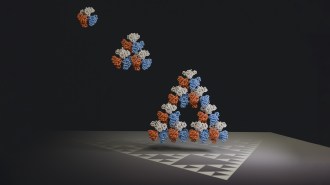- More than 2 years ago
Spin a coin on a tabletop. As it loses energy and tips toward the surface, the coin begins to
roll on its rim, wobbling faster and faster and faster. Toward the end, the coin generates a
characteristic rattling sound of rapidly increasing frequency until it suddenly stops with a distinctive
shudder.
Mathematician H. Keith Moffatt of the Isaac Newton Institute for Mathematical Sciences in
Cambridge, England, now offers an explanation of why this motion ends so abruptly instead of
lingering as the coin keeps on rolling faster. The culprit is the thin layer of air trapped
between the tipping coin and the table, he reports in the April 20 Nature. As its tilt becomes
more pronounced, the rolling coin squeezes and swirls the air beneath. The flowing air takes
up energy, tipping the coin even closer to the surface. At some point, the coin’s edge finally
loses its grip on the table and falls flat.
The larger and heavier the disk, the more dramatic is the effect, Moffatt notes. Such long-lived
behavior can be observed in a commercial toy called Euler’s disk–a chrome-plated steel
disk, 3.75 centimeters in diameter, with a rounded edge to help keep it in motion for remarkably
long periods.
Mathematical investigations of the coin-rattling phenomenon may provide insights into turbulence,
Moffatt suggests. Aided by this simple, tabletop model of what mathematicians
describe as a finite-time singularity, researchers can take a fresh look at the yet-unresolved
question of whether such singularities can occur in the interior of a fluid in turbulent motion.






